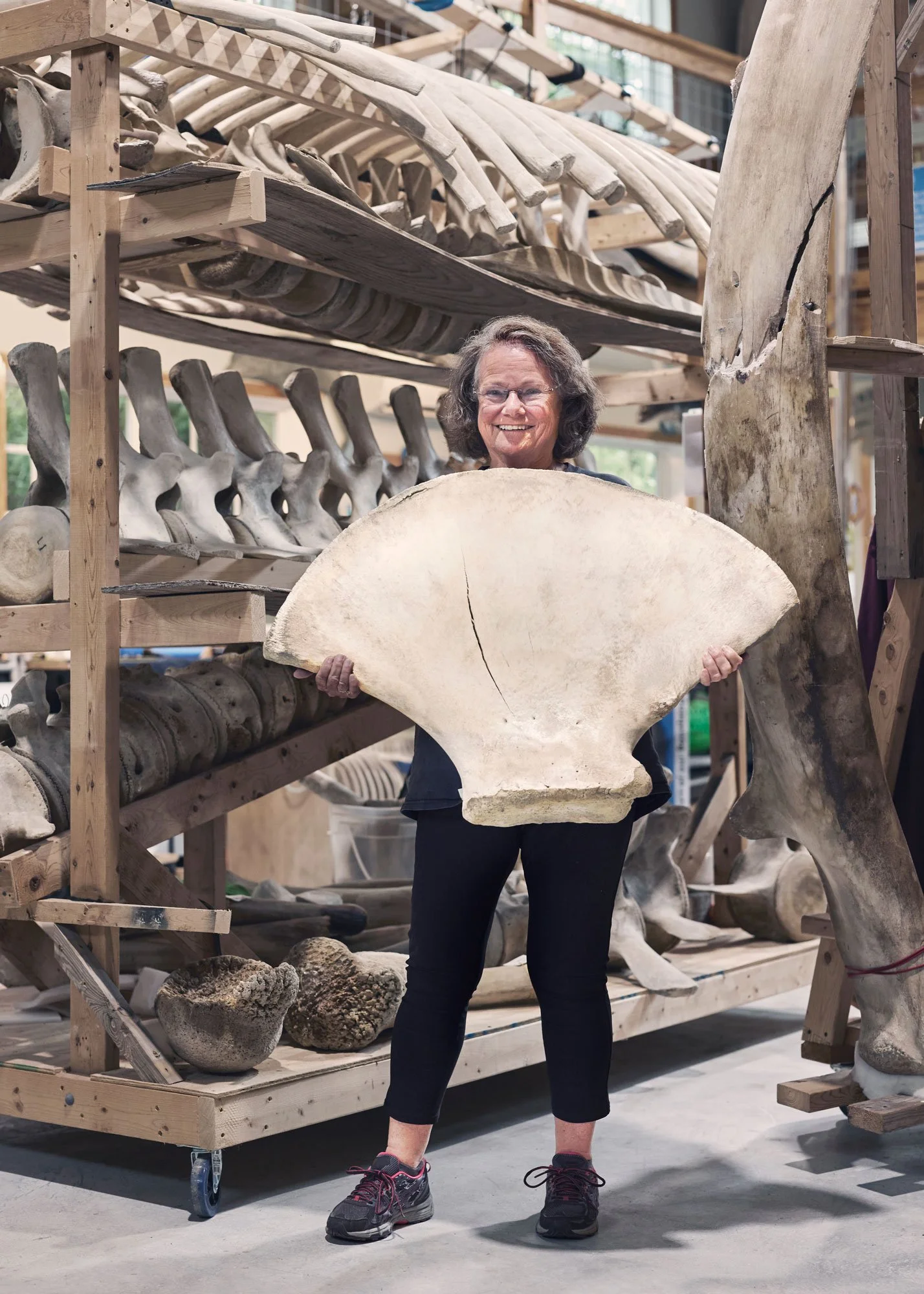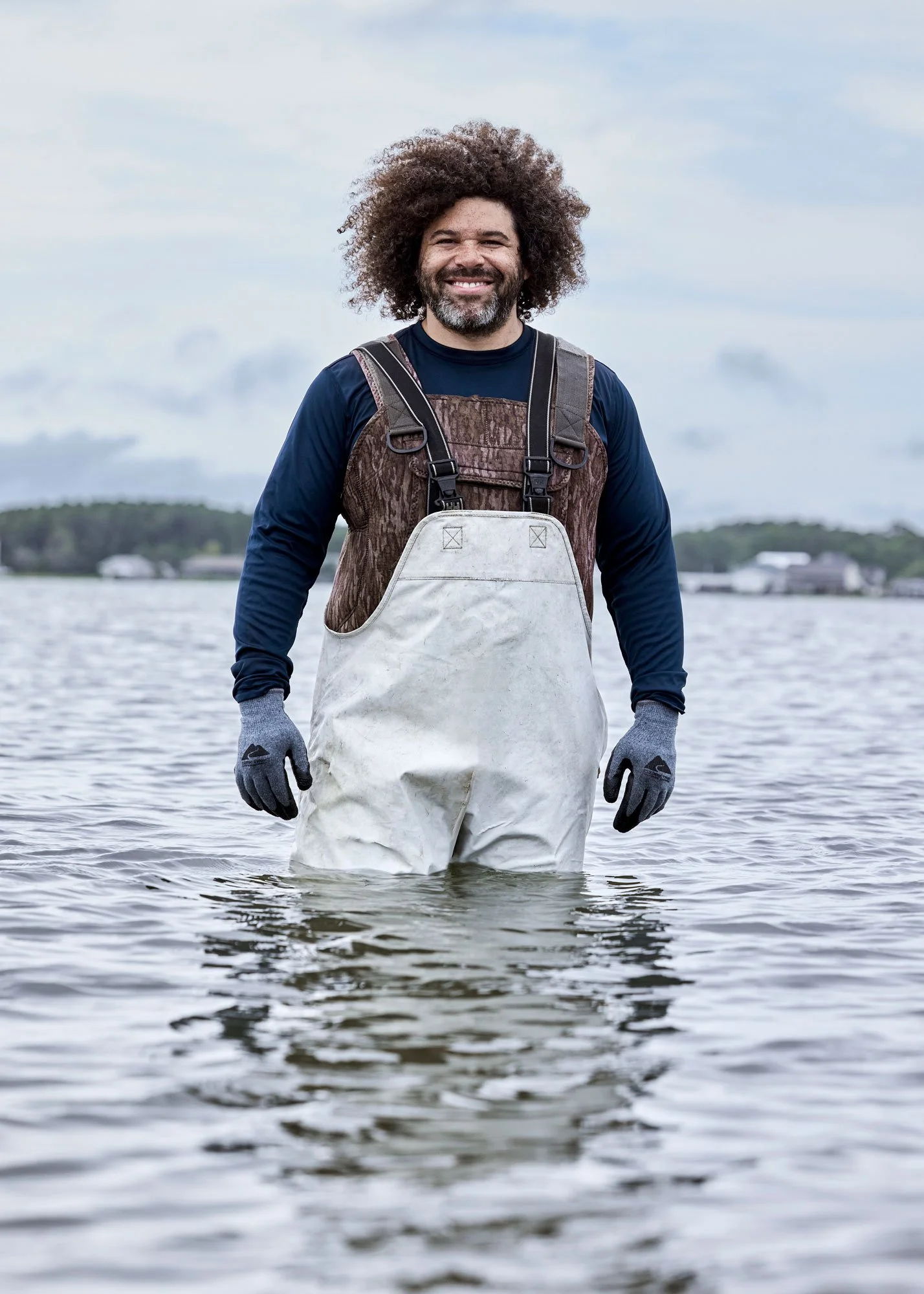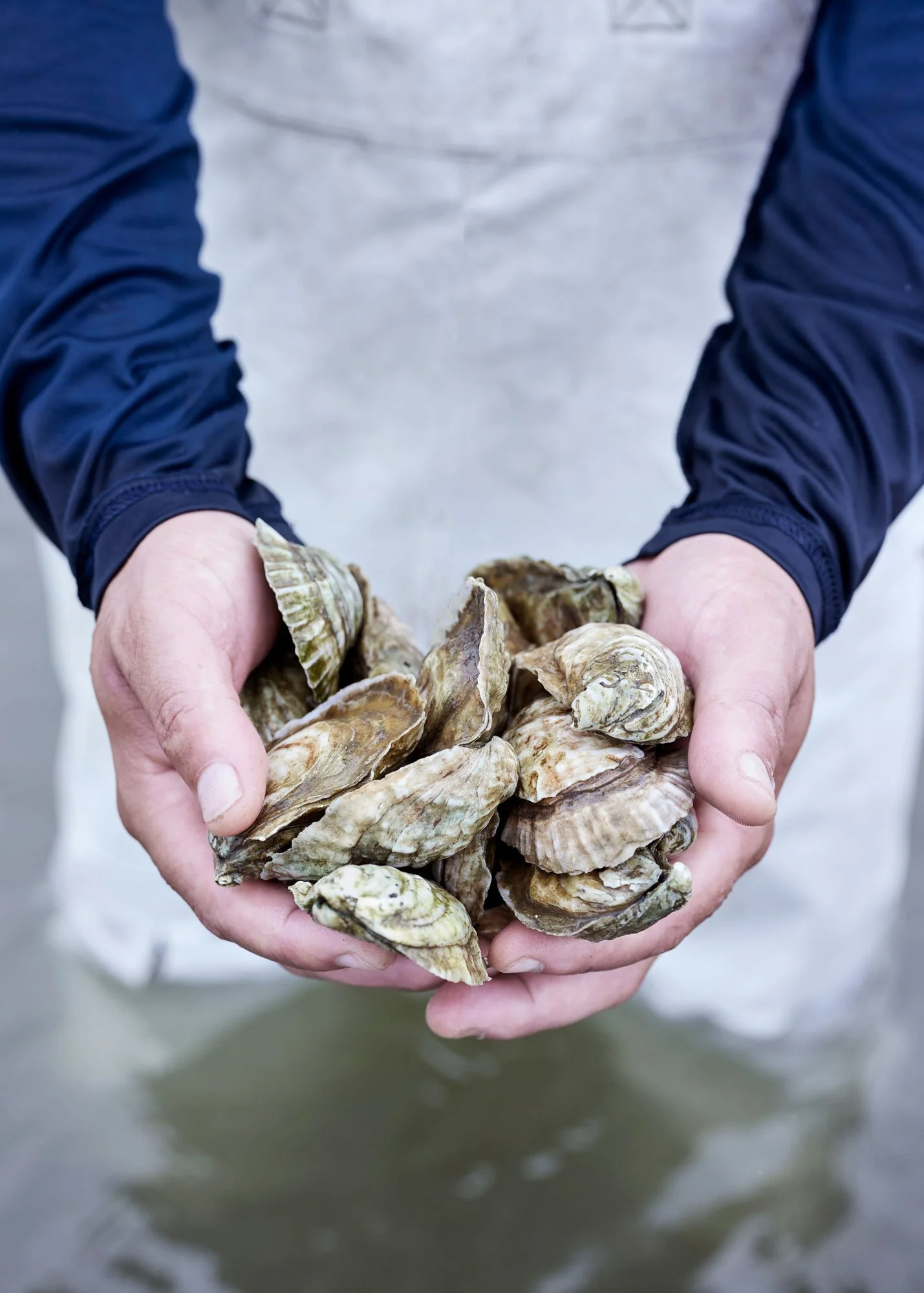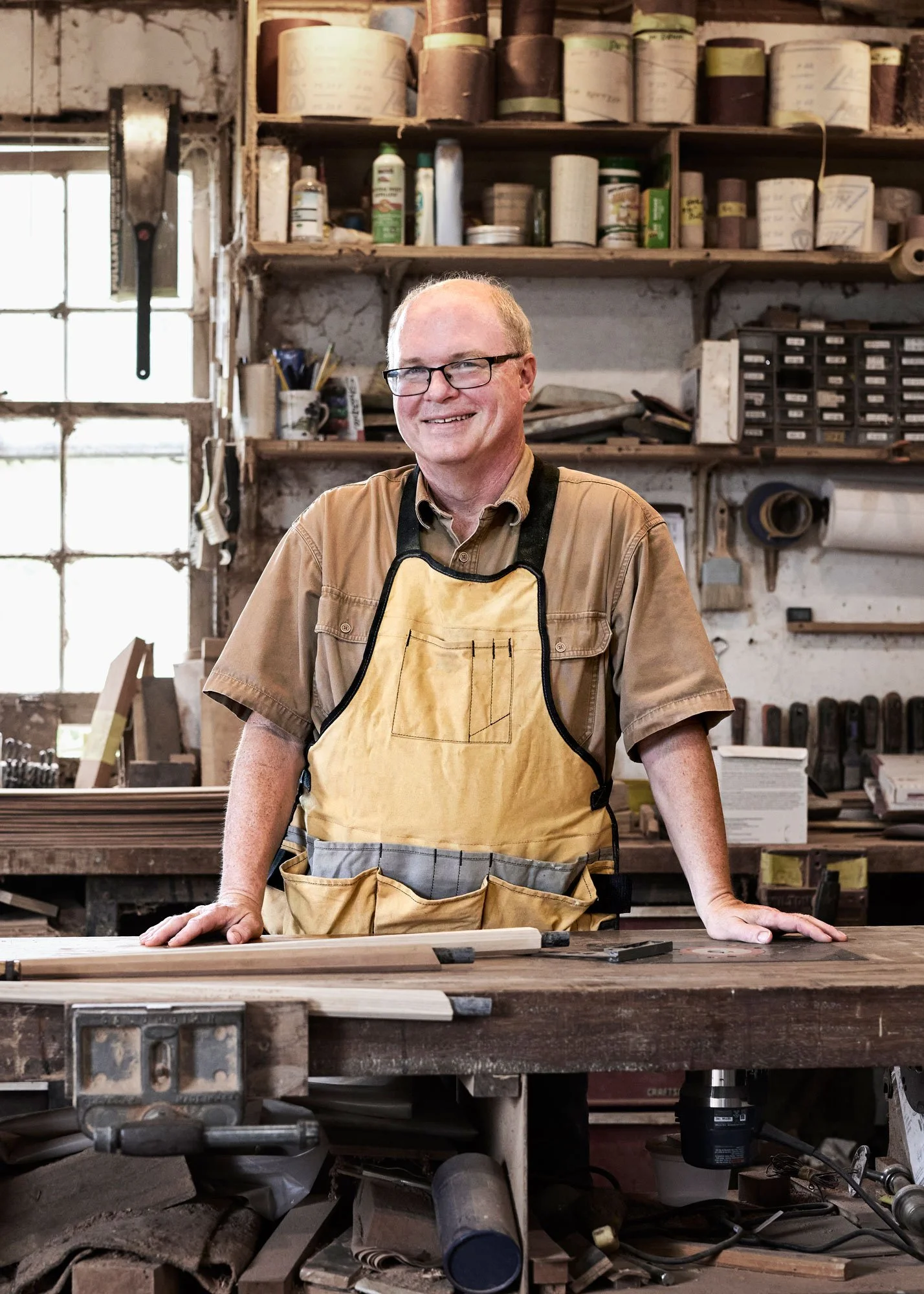MAZDA STORIES
Outer banks
Xxxxxxxxxx
There appears to be a dinosaur crossing the road. Rain pounds down the windscreen obscuring my view and thunder growls all around. Lightning electrifies the sky revealing a cantankerous old snapping turtle, her spiky black armour and pre-historic beak camouflaged on the dark wet tarmac. Fortunately for my scaly acquaintance the CX-90 I’m driving is agile enough to skirt around her in the downpour. But visibility is so reduced I pull over to wait for the deluge, and any other wildlife, to pass.
I’m in Beaufort North Carolina driving the southern segment of the Outer Banks Scenic Byway, or Down East, as locals call it. This jigsaw puzzle of barrier islands is home to fabled wild horses, picturesque maritime towns and acres of empty beaches. Also known as the Crystal Coast the region is populated by close-knit communities who have the sea running through their veins. I’m here to seek out the local artisans, farmers and volunteers all committed to their craft and the sustainability of their beloved environment.
Within the time it takes to park and buy a coffee the sun has emerged erasing every last cloud and I’m on my way to visit Bonehenge Whale Center. Built entirely by a devoted community of volunteers Bonehenge is a non-profit facility for cetaceous conservation, a love letter to the North Carolina coast written in baleen and glue. The imposing mandibles of a North Atlantic Right Whale tower above me as I enter. Wooden shelves house bleached vertebrae the size of my head and scores of neatly numbered rib bones.
Cary Spencer, one of the founding volunteers, greets me pressing together fragments of a porpoise skull she is painstakingly reconstructing. The team here have developed their own methods for rearticulating skeletons to help people understand the marine wildlife around them and the dangers they face from modern shipping and nets.
Much of the Center’s work is in research and education. “This place is about telling a story” Cary explains. “I want my grandchildren to know you can embark on a new endeavour you care about at any age, you can always make a difference. It’s so important for people to connect to these mammals emotionally. We have to understand that we are all connected.” It’s a sobering experience but heartening too to see the community’s hard work and commitment.
Working at other end of the food chain local oysterman Ryan Bethea is equally passionate about the environment. I loop up across the wide North River then coast south beneath loblolly pines and squalling skies to reach Harker’s Island. I find Ryan happily tumbling shells knee-deep in the Sound.
He explains the myriad environmental benefits of oyster farming as he sorts through his harvest, expertly discarding sub-par specimens. “Oysters are a keystone species. They filter out particulates improving water quality which is good for the entire eco-system. The beds support biodiverisity and help restore decimated wild oyster populations. They’re also a highly sustainable source of protein.” He shucks a couple of the large gnarled bivalves and hands one to me. We toast shells and swallow their briny contents. My eyes widen at the potent hit of saline umami. Ryan is all smiles as he explains his oysters are often the first time his customers have ever tried them. His company Oysters Carolina delivers all over the state and offers free oysters to low income families with no minimum order which eliminates waste and encourages people to try something they might otherwise be intimidated by. “We live in a time when it’s more important than ever to help one another and I really want oysters to be accessible for everyone.” I leave Ryan to his valuable work after one more oyster for the road.
Discarded shell fragments crackle under the wheels as I pull away and I make my way to one of the island’s many jetties. I’m whisked away on a skiff by Captain Len Chestnut to explore the narrow barrier islands of the Sound while the weather holds. Shackleford Banks is a short trip south, home to a herd of wild mustangs thought to descend from colonial Spanish horses. I’ve been told they’re not easy to find so I’m overjoyed to see a rust-coloured mare and her ungainly black foal nuzzling on the shore. We head east as the sunset gilds the waves toward the epic empty dunes of Cape Lookout. The still-operational lighthouse known as the Diamond Lady flashes her welcome. Bold black and white markings not only help distinguish her from the other lighthouses but also signal direction. Black diamonds indicate north-south and the white east-west. I spend a while shelling on the sandbars, entertained by the sand pipers’ repertoire of silly walks.
The next morning I make my way to Budsin Electric Boats in Marshallberg. Owner Tom Hesselink warmly welcomes me into his workshop through a swirl of sawdust particles suspended in the sunlight. Fresh cut lumber perfumes the air. Tom and his highly trained craftsmen build a range of elite wooden electric launches the pedigree of which is clear from his year-long waiting list.
Row upon row of tins line the walls filled with epoxy, resin and solvents. Racks of clamps, templates and offcuts hang above the elegant hulls, high up on cradles, varnished to a tough toffee-coloured gloss. “The boats are really all about people. I put a lot of thought into designing the controls to make them discreet and intuitive. There are no emissions and the engines are all but silent so people can hear each other talk. We call them Quiet boats.” Tom tells me. The vessels are constructed from hardy Atlantic white cedar and built to last with zealous attention to detail.
One launch from Tom’s range is named for EV pioneer Gustav Trouvé. Fittingly the Trouvé seats eight passengers as does my CX-90 although this trip I have it all to myself which is helpful in the mercurial weather – plenty of room to dry clothes and stretch out while the storms rage. I stay in electric mode on the final leg up to Cedar Island. I’m keen to minimise emissions but it is reassuring in the more remote areas to have gas as a back-up.
I rejoin the Outer Banks Scenic Byway and for a long time there is nothing between me and miles of flawless asphalt. This part of the trip is all about the drive. The cloud opera above is reflected with pin sharp fidelity in the canals that flank the road. Successive bridges arc up above the salt marshes and a squadron of stoical brown pelicans fly so close in front of me I can see individual feathers. I’m reminded of the Wright Brothers who came to the Outer Banks to do their pioneering work on aviation and were inspired in their engineering by the local birds they observed. Wilbur Wright said “It is possible to fly without motors but not without knowledge and skill.” As I run out of road I think about how the tenacity, expertise and dedication of the people I met here are testament to that pioneering spirit. Then I turn right around and head back the way I came to catch a flight of my own.
Words: Jenni Doggett
Photography/Film: Anthony Dias




